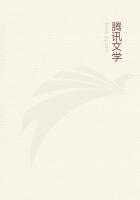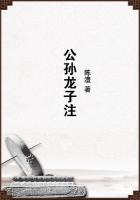In the mountain called Elaphoeis or Deer Mountain, which is in Arginussa in Asia Minor-the place, by the way, where Alcibiades was assassinated-all the hinds have the ear split, so that, if they stray to a distance, they can be recognized by this mark; and the embryo actually has the mark while yet in the womb of the mother.
The hind has four teats like the cow. After the hinds have become pregnant, the males all segregate one by one, and in consequence of the violence of their sexual passions they keep each one to himself, dig a hole in the ground, and bellow from time to time; in all these particulars they resemble the goat, and their foreheads from getting wetted become black, as is also the case with the goat. In this way they pass the time until the rain falls, after which time they turn to pasture. The animal acts in this way owing to its sexual wantonness and also to its obesity; for in summer-time it becomes so exceptionally fat as to be unable to run: in fact at this period they can be overtaken by the hunters that pursue them on foot in the second or third run; and, by the way, in consequence of the heat of the weather and their getting out of breath they always make for water in their runs. In the rutting season, the flesh of the deer is unsavoury and rank, like the flesh of the he-goat. In winter-time the deer becomes thin and weak, but towards the approach of the spring he is at his best for running. When on the run the deer keeps pausing from time to time, and waits until his pursuer draws upon him, whereupon he starts off again. This habit appears due to some internal pain: at all events, the gut is so slender and weak that, if you strike the animal ever so softly, it is apt to break asunder, though the hide of the animal remains sound and uninjured.
30
Bears, as has been previously stated, do not copulate with the male mounting the back of the female, but with the female lying down under the male. The she-bear goes with young for thirty days. She brings forth sometimes one cub, sometimes two cubs, and at most five. Of all animals the newly born cub of the she bear is the smallest in proportion to the size of the mother; that is to say, it is larger than a mouse but smaller than a weasel. It is also smooth and blind, and its legs and most of its organs are as yet inarticulate. Pairing takes Place in the month of Elaphebolion, and parturition about the time for retiring into winter quarters; about this time the bear and the she-bear are at the fattest. After the she-bear has reared her young, she comes out of her winter lair in the third month, when it is already spring. The female porcupine, by the way, hibernates and goes with young the same number of days as the she-bear, and in all respects as to parturition resembles this animal.
When a she-bear is with young, it is a very hard task to catch her.
31
It has already been stated that the lion and lioness copulate rearwards, and that these animals are opisthuretic. They do not copulate nor bring forth at all seasons indiscriminately, but once in the year only. The lioness brings forth in the spring, generally two cubs at a time, and six at the very most; but sometimes only one. The story about the lioness discharging her womb in the act of parturition is a pure fable, and was merely invented to account for the scarcity of the animal; for the animal is, as is well known, a rare animal, and is not found in many countries. In fact, in the whole of Europe it is only found in the strip between the rivers Achelous and Nessus. The cubs of the lioness when newly born are exceedingly small, and can scarcely walk when two months old. The Syrian lion bears cubs five times: five cubs at the first litter, then four, then three, then two, and lastly one; after this the lioness ceases to bear for the rest of her days. The lioness has no mane, but this appendage is peculiar to the lion. The lion sheds only the four so-called canines, two in the upper jaw and two in the lower; and it sheds them when it is six months old.
32
The hyena in colour resembles the wolf, but is more shaggy, and is furnished with a mane running all along the spine. What is recounted concerning its genital organs, to the effect that every hyena is furnished with the organ both of the male and the female, is untrue. The fact is that the sexual organ of the male hyena resembles the same organ in the wolf and in the dog; the part resembling the female genital organ lies underneath the tail, and does to some extent resemble the female organ, but it is unprovided with duct or passage, and the passage for the residuum comes underneath it.
The female hyena has the part that resembles the organ of the male, and, as in the case of the male, has it underneath her tail, unprovided with duct or passage; and after it the passage for the residuum, and underneath this the true female genital organ. The female hyena has a womb, like all other female animals of the same kind. It is an exceedingly rare circumstance to meet with a female hyena. At least a hunter said that out of eleven hyenas he had caught, only one was a female.
33















